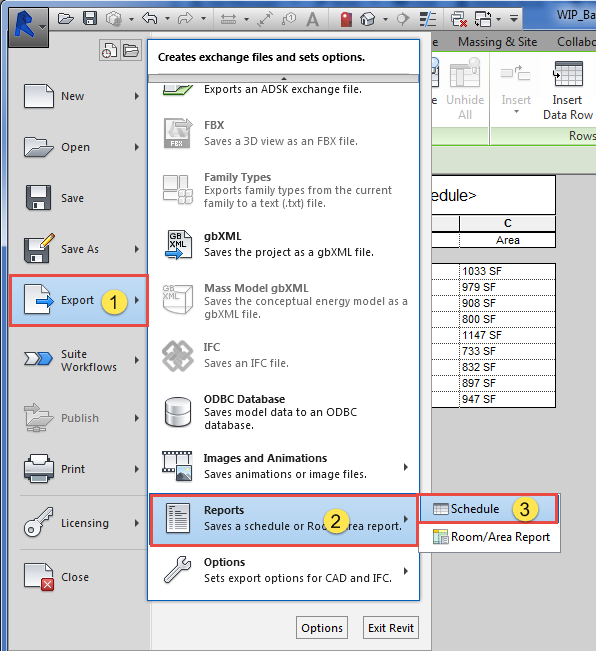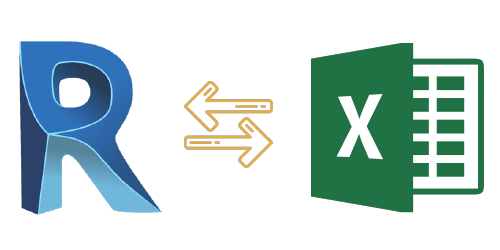Excel-to-Revit: A Game-Changing Operations for Architectural Style - Revealing the Secrets
Introducing excel-to-revit, the game-changing workflow that will transform your style process. With excel-to-revit combination, you can improve your building layout, unlock effectiveness, and maximize partnership within your group. Obtain prepared to take your architectural design to the following degree with excel-to-revit!
The Power of Excel-to-Revit Assimilation

Visualize the benefit of being able to modify and upgrade job information in Excel, and immediately see those changes reflected in your Revit design. No much more hand-operated information entrance or laborious updates. With Excel-to-Revit assimilation, you can conserve time and minimize mistakes by leveraging the power of Excel's solutions and features to automatically create exact information in Revit.
Not just does this integration enhance effectiveness, but it also enhances cooperation among team participants. You can quickly share Excel data with coworkers, who can then import the data right into their Revit versions. This advertises a seamless exchange of information and ensures that everyone is collaborating with one of the most up-to-date data.

Enhancing Architectural Style With Excel-To-Revit
Simplifying architectural style is made easier with the usage of Excel-to-Revit (revit add ins). With this effective combination, you can optimize your process and conserve important time throughout the design procedure. By leveraging the abilities of Excel and Revit, you can flawlessly transfer information between both systems, removing the requirement for hand-operated data entry and minimizing the risk of errors
Excel-to-Revit permits you to import and export information easily, enabling you to conveniently upgrade and modify your building layouts. You can develop timetables, calculate quantities, and generate reports in Excel, and after that transfer that information directly into your Revit design. This assimilation makes certain that your style information is always up-to-date and integrated, removing the need for hands-on updates and reducing the possibilities of incongruities.
By using Excel-to-Revit, you can additionally benefit from the effective computational capabilities of Excel. You can carry out complex computations, examine information, and automate repetitive tasks, all within Excel. With simply a couple of clicks, you can import the results back into Revit, allowing you to make informed layout decisions and enhance your architectural styles.
Unlocking Performance: Discovering the Excel-to-Revit Workflow
Optimize your efficiency by seamlessly incorporating Excel and Revit for an extra reliable process. With the Excel-to-Revit process, you can unlock a whole new degree of efficiency in your building design procedure. By using the power of Excel's data monitoring abilities and incorporating it with the versatility and precision of Revit, you can enhance your layout process and conserve beneficial time.
One of the key benefits of this integration is the ability to import and export data in between Excel and Revit. This implies that you can conveniently transfer job information, such as room schedules or product quantities, from one software program to the various other, eliminating the requirement for hand-operated information access and decreasing the possibilities of mistakes. You can additionally produce customized formulas and calculations in Excel to automate repetitive jobs and do intricate estimations, which can after that be effortlessly integrated right into your Revit designs.
Furthermore, the Excel-to-Revit workflow permits for far better sychronisation and partnership in between staff member. With Excel functioning as a central information center, numerous staff member can deal with different facets of the task simultaneously, sharing and updating info in real-time. This not just boosts communication but also guarantees that everybody is collaborating with one of the most up-to-date information, getting rid of the risk of disparities.
Making Best Use Of Collaboration: Excel-to-Revit for Architectural Teams
By perfectly incorporating Excel and Revit, architectural groups can considerably boost cooperation and accomplish a lot more reliable layout results. When utilizing this powerful process, you can quickly transfer data between Excel spreadsheets and Revit versions, improving the design procedure and boosting interaction amongst group members.
Additionally, by leveraging Excel's effective estimation capabilities, you can perform complex computations and evaluation on your their website design information, giving beneficial insights and driving informed decision-making. This combination additionally allows you to export data from Revit to Excel, allowing you to produce extensive reports, charts, and graphs for discussions and evaluation. This joint process promotes reliable communication and coordination among staff member, as Excel acts as a main center for information administration and sharing.
General, by accepting the Excel-to-Revit operations, building teams can accomplish higher levels of collaboration, effectiveness, and accuracy in their design process. revit tool. This assimilation empowers teams to interact effortlessly, guaranteeing that every person gets on the same web page and adding to the success of the job
Revealing the Tricks of Excel-to-Revit Integration

Among the keys of useful source Excel-to-Revit combination is the capacity to utilize the power of solutions and calculations in Excel to drive parameters and create complicated geometries in Revit. You can connect Excel spread sheets to Revit households, permitting you to input data straight into the spreadsheet and have it immediately upgrade in the Revit model. This streamlines the design procedure and guarantees accuracy and uniformity throughout the task.
Another secret is the capacity to produce custom-made schedules and records in Excel, making use of information drawn out from Revit. This allows you to imagine and examine project info in a means that is not possible within Revit alone. You can quickly produce quantity liftoffs, expense estimates, and task timelines, supplying important understandings for decision-making and task management.
In enhancement, Excel-to-Revit integration allows reliable collaboration amongst team participants. Numerous customers can work with the same Excel spread sheet simultaneously, making it easier to coordinate and track changes. You can also utilize Excel's commenting feature to find out here now supply responses or connect design revisions.
Verdict
By integrating the power of Excel and Revit, engineers can currently work extra successfully, conserve time, and produce much better layouts. Begin integrating excel-to-revit assimilation right into your architectural layout procedure today and change the method you work.
With just a few clicks, you can import the outcomes back right into Revit, allowing you to make enlightened design decisions and enhance your architectural designs.
By using the power of Excel's data management abilities and combining it with the flexibility and precision of Revit, you can improve your design process and save useful time.
By perfectly integrating Excel and Revit, architectural teams can greatly boost collaboration and accomplish more efficient design outcomes. When utilizing this effective operations, you can conveniently move data between Excel spreadsheets and Revit models, enhancing the design process and improving communication among group members.Additionally, by leveraging Excel's effective estimation abilities, you can carry out intricate computations and evaluation on your layout data, driving and supplying beneficial understandings informed decision-making.